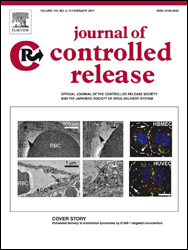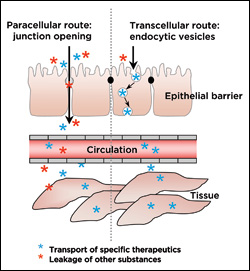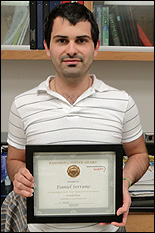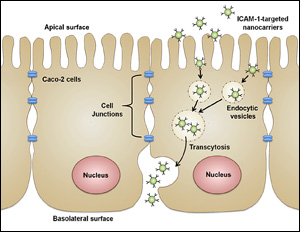News Story
Hsu Wins Best Poster Award for Research on Rare Neuromuscular Disorder

Targeting of therapeutic nanocarriers to glycogen-filled lysosomes for treatment of Pompe disease: a cell is shown where lysosomes are stained red, nanocarriers fluoresce green, and colocalization of nanocarriers within lysosomes is depicted as yellow.
Hsu's poster, titled "Receptor-Targeted Nanoparticles for Enzyme Replacement Therapy of Genetic Pompe Disease," described a new method of delivering therapeutics to patients suffering from Pompe disease, a rare and potentially lethal neuromuscular genetic disorder that causes the accumulation of glycogen, a form of sugar used by the body for energy.
Under normal circumstances, glycogen is broken down by cells in compartments called lysosomes, using an enzyme called alpha-glucosidase (GAA). A person with Pompe disease does not produce enough GAA to meet their cells' needs, or may not produce any at all, causing glycogen to accumulate in the lysosomes. As cells are damaged by swelling, unprocessed glycogen escapes into intercellular space throughout the body. The buildup has the most effect on muscles, which are unable to function properly and gradually weaken. Many of those who suffer from the disease ultimately die of heart or respiratory failure.
Currently enzyme replacement therapy (ERT) is used to treat patients. Large doses of medication are required because only a percentage of the GAA administered is successfully delivered to the lysosomes of the cells. The body responds to the unnaturally high concentration of GAA by producing antibodies to destroy it, further reducing the efficacy of the treatment.
As a part of the nanobiotechnology platform that the Muro Lab is developing for the treatment of rare genetic diseases, Hsu is designing targeted nanocarriers (vesicles used to deliver drugs in a variety of treatments) to improve the delivery rate of GAA to specific organs in the body and increase the amount of it ultimately transported into the lysosomes of cells. She is part of a team that has designed a prototype therapeutic strategy consisting of polymer nanoparticles coated in GAA and designed to be attracted to a specific receptor found on the surface of the targeted cells. In testing, radioisotope tracing revealed that enzyme delivery to target organs in mice was improved using the new technique. Once at their destination, the nanoparticles were taken into cells, and the GAA was transported into the lysosomes, where it successfully broke down glycogen.
Bioscience Research & Technology Review Day, hosted annually by the College of Chemical and Life Sciences, is a special event that features research talks, presentations, mini-symposia, and demonstrations by university scientists. The program provides an opportunity for professionals in industry and government to learn more about recent advances in bioscience, bioengineering and biotechnology at the University of Maryland, meet faculty and students, identify potential collaborators, and recruit employees.
Learn More:
Visit the Bioscience Research & Technology Review Day web site »
Published December 1, 2009







